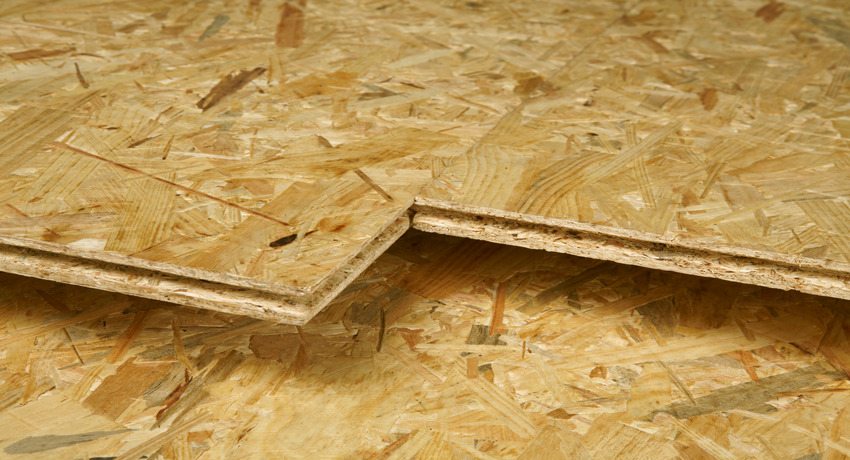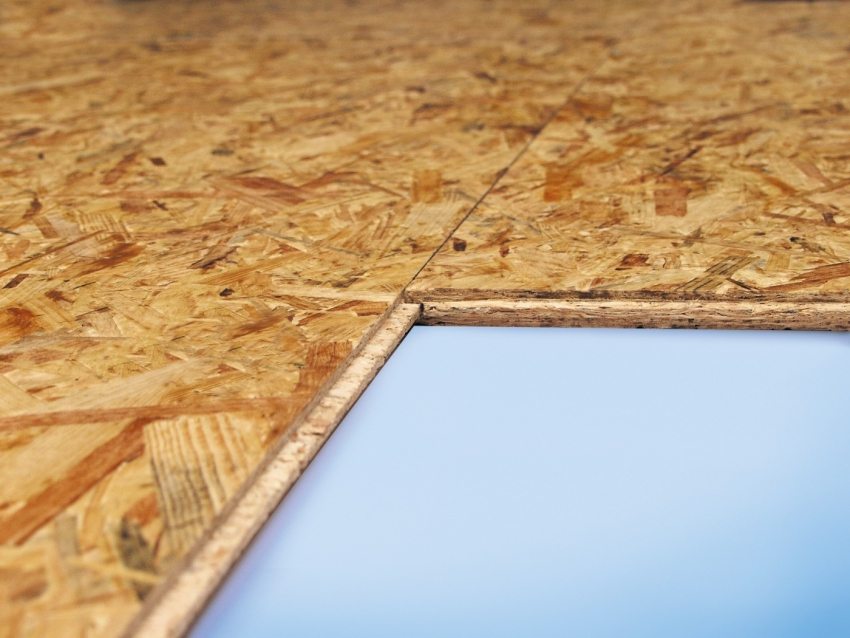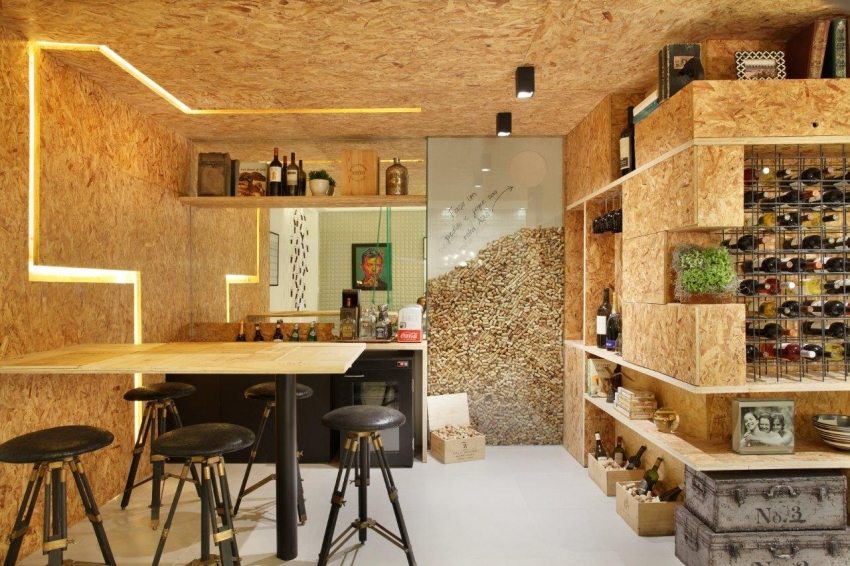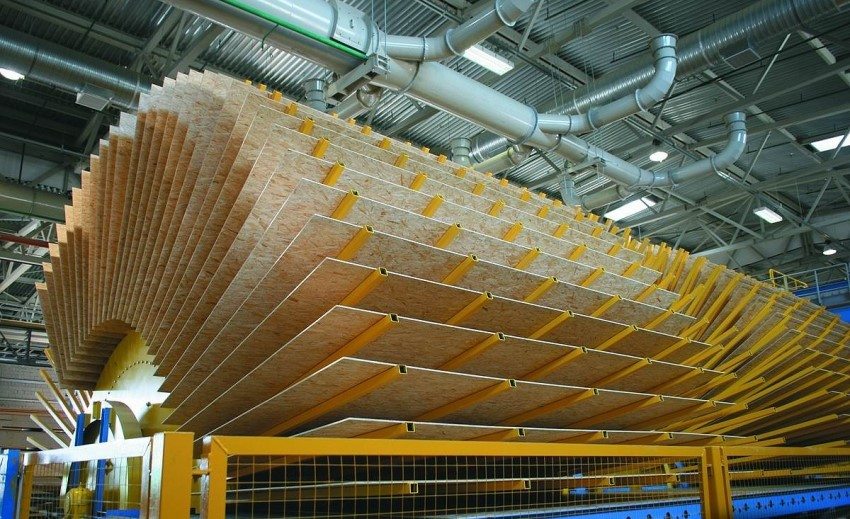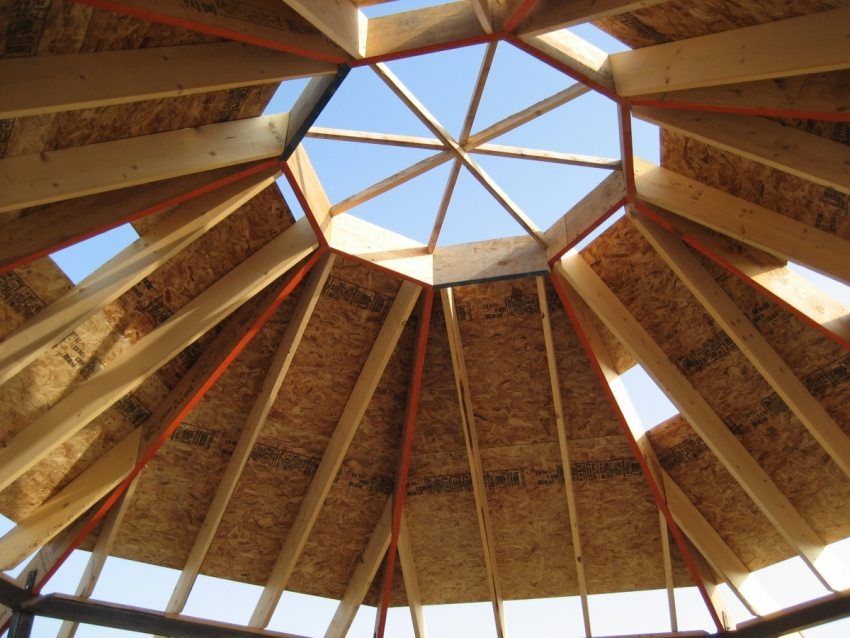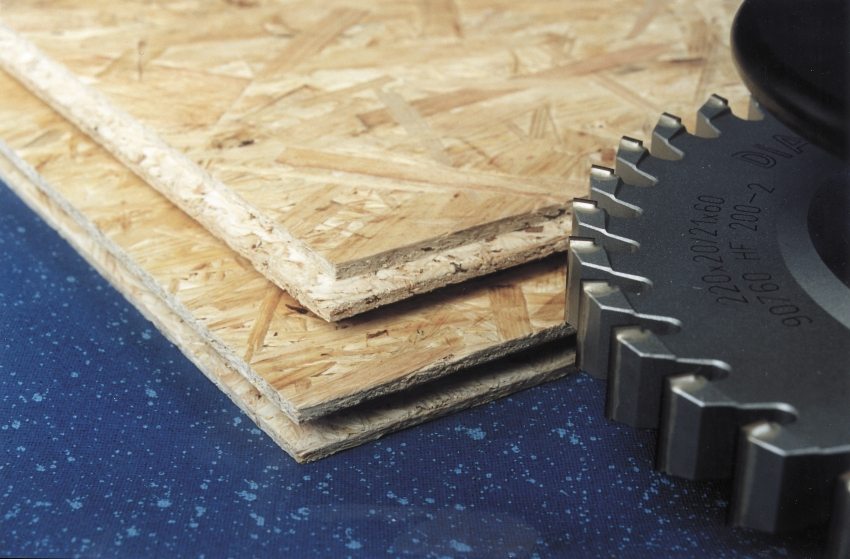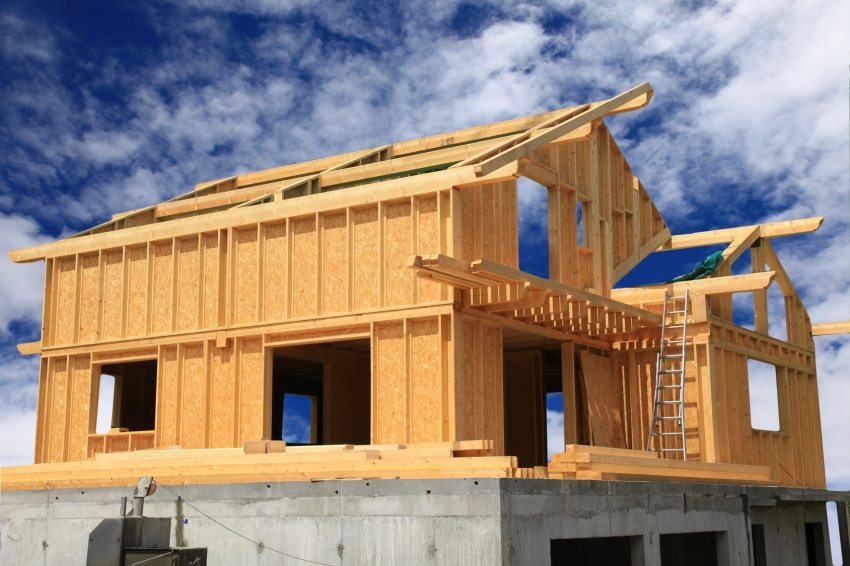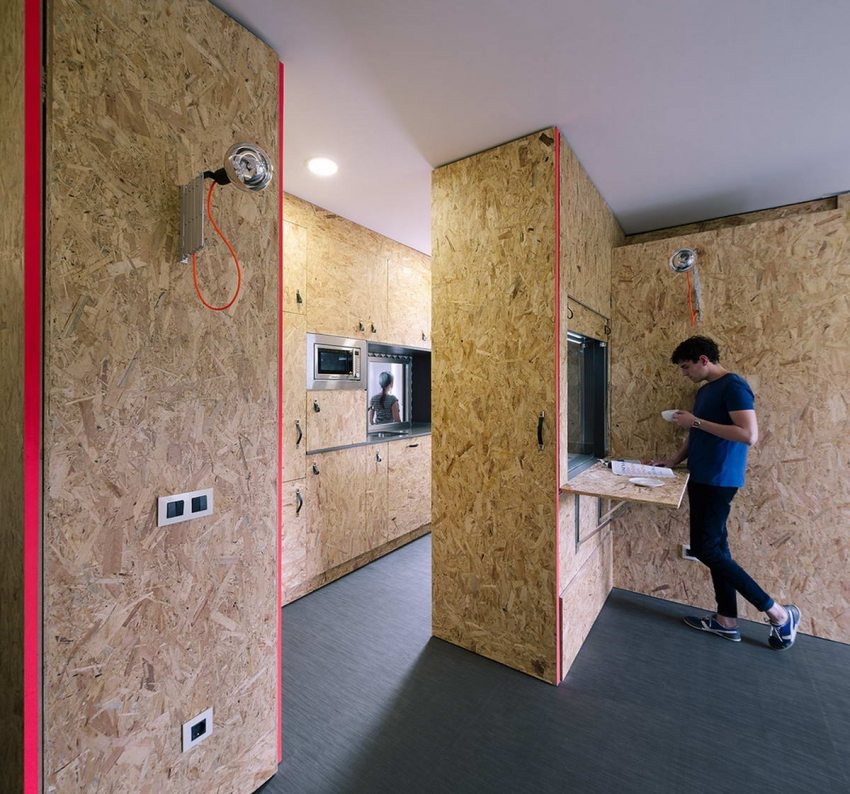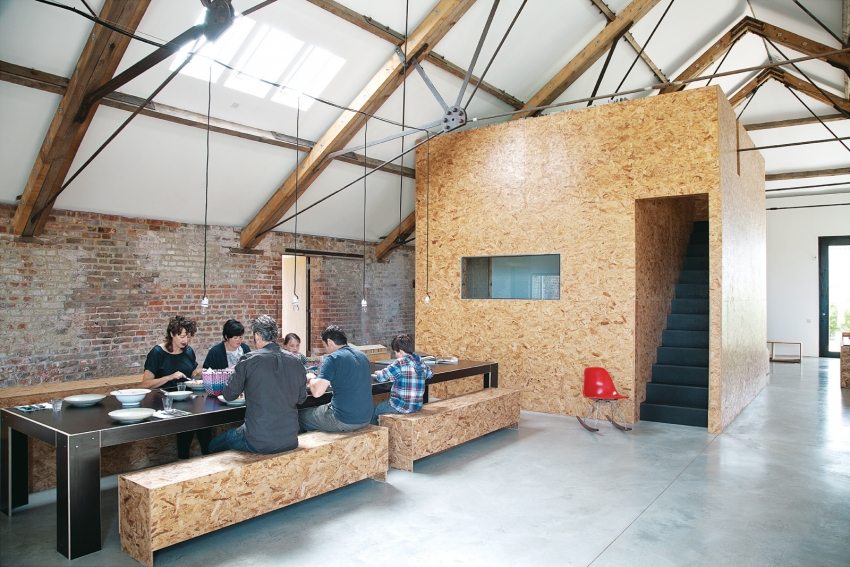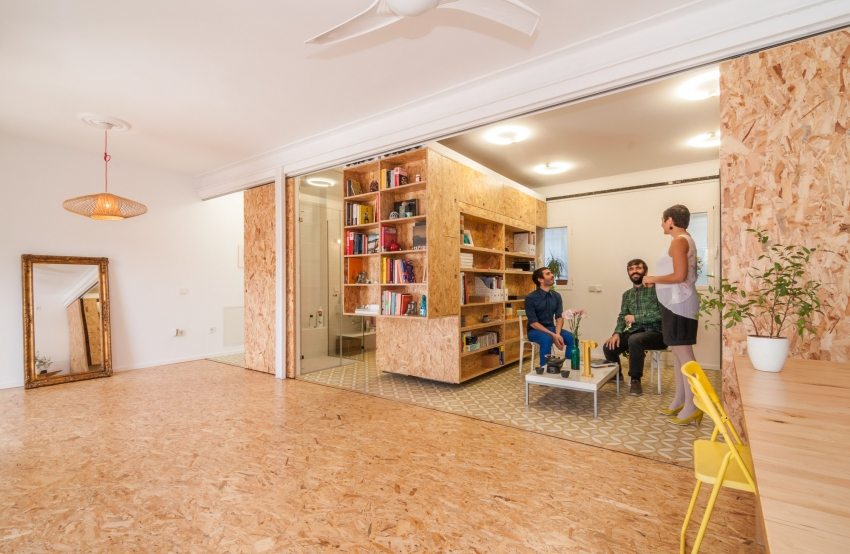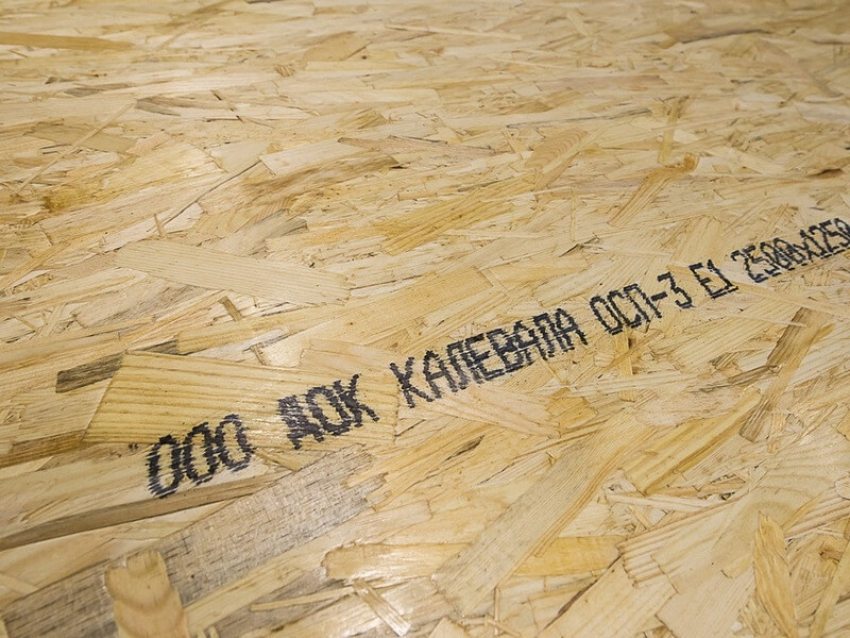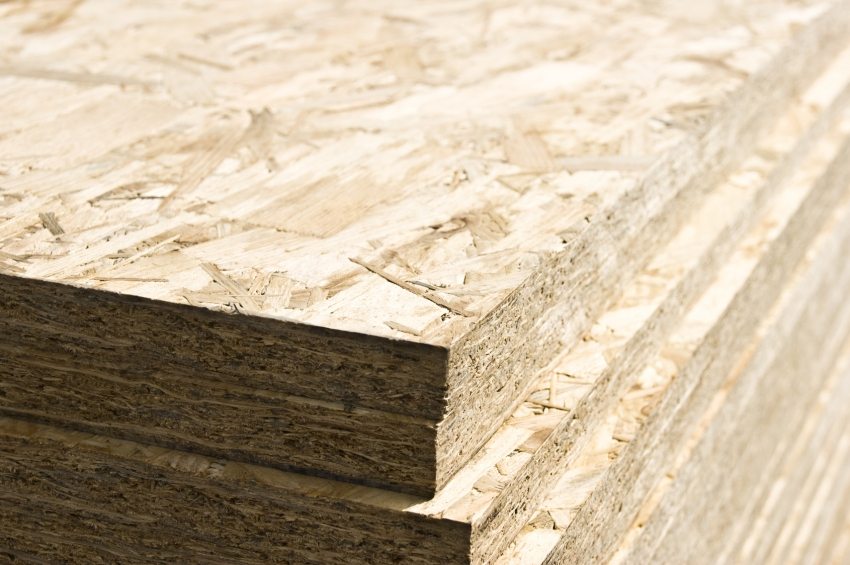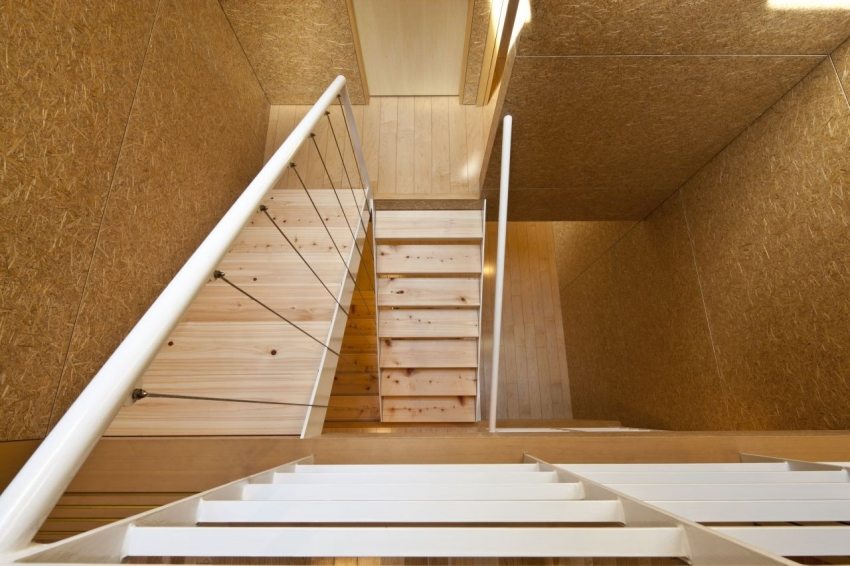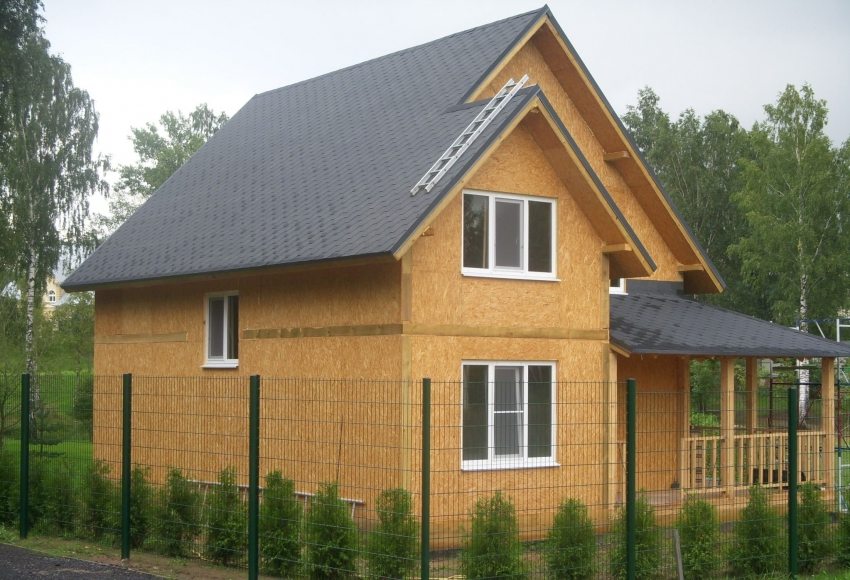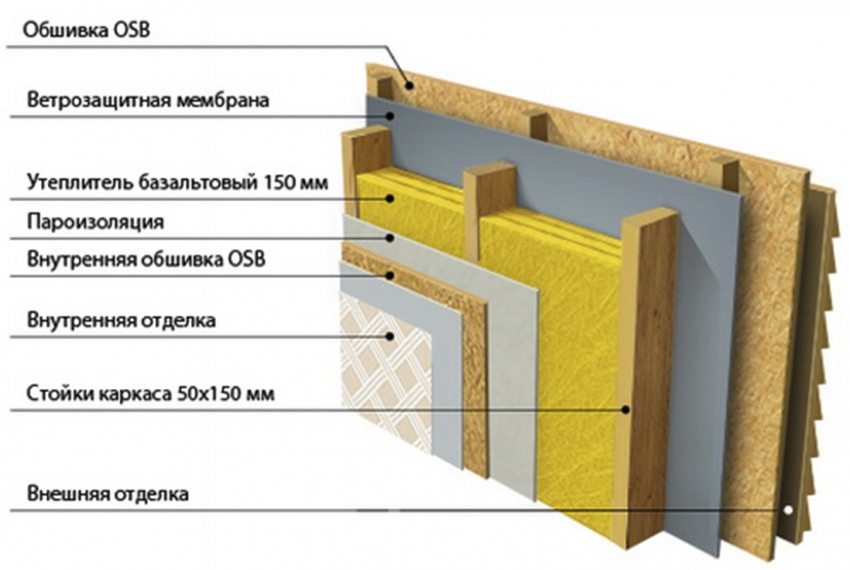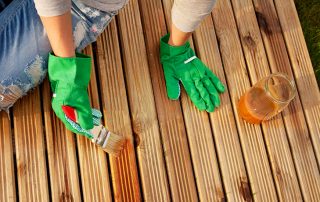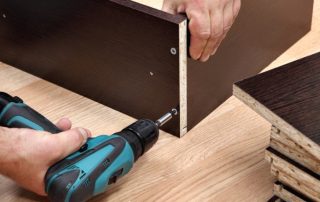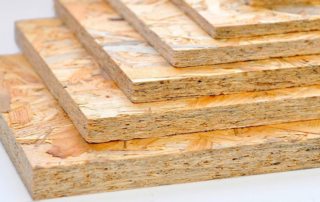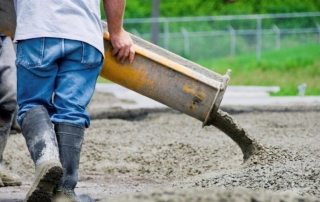Oriented strand board has become an integral part of modern construction, replacing the once popular particle board. The multi-layer structure, combined with the high quality of the wood used, gives this material excellent technical characteristics. Consider in the article the properties, features, sizes and prices of OSB boards, as well as common areas of their application.
Content [Hide]
OSB slabs: what it is, and what they are
In order to use such panels correctly and effectively in work, you need to know that OSB board is a building material that consists of elements of wood, the so-called large-sized shavings. These particles are bonded together using high temperature and pressure, as well as a waterproof resin.
From Chipboard such plates differ mainly in the arrangement of chips in layers: the transverse direction is typical for the inner part of the plate, but longitudinally the chips are placed outside. So, due to several layers (most often three, sometimes four) and the alternation of the directions of the location of the chips, a strong and reliable building material is obtained.
As a basis for the manufacture of such plates, chips with a length of 7.5 to 15 cm are used. The width and thickness of the chips should also be within the normal range - 1-1.2 cm and 0.5-0.8 mm, respectively. Elements of a smaller size are not used for the production of OSB, they are transported for the manufacture of chipboards.
Depending on the thickness, as well as the weight of the OSB board, all products are divided by manufacturers into three main classes:
- OSB 1 is the lightest and simplest slab option. Its use is limited to simple work that does not involve too much stress on the surface. In addition, the material does not tolerate increased air humidity;
- OSB 2 is a more durable option, the use of which is permissible even when installing supporting structures. However, this material also reacts negatively to moisture;
- OSB 3 is the most expensive, but also the best option. This class of slabs is not afraid of serious loads or high humidity. The use of this building material is permissible even in the most severe conditions.
OSB board production technology
In order to better understand the intricacies of use and characteristics of OSB, you need to know how and from what they are obtained. Consider a brief manufacturing technology for this material.
The first stage is the selection of suitable wood. The trunks of a small-sized non-business tree are pre-selected and sawn into small pieces that serve as blanks. Then a special machine crushes them, turning them into chip tape. Depending on the needs of production, you can set a different size of chips that are obtained at the output. After drying, the material goes to the machine, where small chips are separated from large ones.
After the chips of the desired size have been sorted, binders are added to them for mixing. Most often, these are phenolic or isocyanate substances, which give the future board internal strength and moisture resistance. The resulting mixture is mixed with paraffin and resins in a special drum.
The formation of the slab itself begins with the process of laying the chips in layers along and across. For this, a special machine is used, equipped with scales and magnets.
When the potential plate has found its shape, the pressing process is carried out, applying a pressure of 5 N / mm². The increased temperature and pressure ensure strong adhesion of the elements, forming a single solid plate, which, after cooling, is cut into products of the desired size.
Scope of OSB boards
Due to its characteristics and affordable price, OSB particle boards are widely used in many areas. Here are just a few of the most basic uses for this material:
- installation of OSB boards on walls (both from the outside and from the inside);
- laying OSB floors;
- erection of both temporary and permanent partitions;
- creation of structural elements in low-rise construction;
- creation of a continuous sheathing for further laying of roofing material.
OSB boards: dimensions and specifications
The technical characteristics of OSB boards will pleasantly surprise even the most experienced builder. Below we will consider what the main properties of this material make it so attractive.
Ease of processing. Having a standard set of carpentry tools, you can easily work fully with OSB board. You can saw, cut, plan, or grind to make it the size and shape you want. And in order to provide it with a reliable fastening, you can drill or punch holes in it for fasteners.
High retention capacity. Large chips used in the production process make it possible to drive nails into the slab even at a minimum distance from the edge (up to 6 mm) without the risk of chips. OSB perfectly holds fasteners.
You can also use wood glue as a method of fixing the board.
Useful advice! If you plan to use an OSB sheet as an external finishing material, then be sure to protect it with a special paint and varnish composition.
Density of the slab. This figure for a standard OSB 3 (the value may vary slightly depending on the manufacturer) is about 640 kg / m³.
Moisture resistance. Despite their woody origin, OSB boards react to contact with moisture absolutely calmly. They, of course, can deform under the influence of water, but this reaction is noticeable only if the air humidity rises above 65%. Up to this point, the stove is able to withstand changes, completely retaining its appearance and characteristics. The most resistant to moisture is OSB 3. Products of the first class, respectively, have the lowest water resistance.
Fire safety of oriented strand board. In the process of studying the technical characteristics of OSB 3 boards, this point raised many questions. After all, small particles of wood are highly flammable, and can pose an additional hazard in the event of a fire. However, numerous experiments have proven that it is possible to use the material for the construction of residential buildings. However, it is advisable to combine it with non-combustible fillers or insulation, for example, mineral wool.
Oriented strand board sizes vary, depending on the product class and the way the edges are processed. Products of the OSB 3 class with the following dimensions are considered to be classic:
- 2500x1250 and 2440x1220 mm, provided that the edges of the slab are evenly cut;
- 2500x1250, 2450x590, 2440x590 and 2440x1220 mm for slabs with tongue and groove.
Depending on the purpose and type of product, the thickness of the slab can vary from 9 to 22 mm.
Related article:
OSB sheets: thickness and dimensions, prices, specifications. Parameters, classification, production methods and applications. Technical characteristics of various types.
Advantages and disadvantages of using OSB boards
Based on some experience with OSB boards, the characteristics of this material, as well as reviews, certain conclusions can be drawn regarding the pros and cons of this material. Benefits of using OSB:
- the probability of delamination, splitting or the appearance of chips is almost completely absent, due to the homogeneous structure of the slab;
- correctly oriented chips prevent moisture penetration, and also makes it possible to hammer nails into the slab without fear;
- OSB boards are easy to cut, saw, etc .;
- the comb-groove method is excellent for connecting plates to each other;
- plates are insensitive to sudden temperature changes and moderate weight loads;
- structures erected from OSB boards have an irreplaceable quality - elasticity. This allows them to better withstand any tremors than, for example, stone structures;
- with the appropriate certificate, the finished product is completely safe for human health;
- with all its advantages and characteristics, OSB boards retain an affordable cost. Depending on the thickness and size, the price of an OSB 3 slab can start from 580 rubles per sheet.
It is difficult to note any serious shortcomings of this product. The only thing worth remembering is that working with any wood material requires respiratory protection. The resins that are part of wood dust are carcinogens that are unsafe for human health. As for the rest, it is rather difficult to find cons. It is enough just to see a photo of OSB boards on the Internet to understand how widely they are used in construction, and how many projects can be implemented with their help.
Is there any harm to human health from using OSB plates?
Oriented strand board is called a completely environmentally friendly material. However, despite this, you can hear many different opinions, asserting the terrible danger posed by OSB slabs. Let's try to figure out whether these concerns are justified, and whether there is a real threat to health in the case of using these products.
According to those who believe in the unsafeness of the compounds used for the manufacture, phenol-formaldehyde, urea-formaldehyde and melamine-formaldehyde resins are of synthetic origin. And although it is they who endow OSB boards with all those qualities for which they are so highly valued, if the manufacturing technique is not followed, they can be unsafe even after they have completely solidified.
Useful advice! Particular attention to the certification of the purchased product should be paid attention to those people who have a predisposition to allergic reactions, as well as families with small children.
The dangers posed by the excessive release of carcinogenic impurities such as formaldehyde, phenol, benzene and methanol are very serious. This is fraught with the appearance of allergic skin reactions and the likelihood of developing serious diseases. As a result of exposure to these substances, violations of the cardiovascular system are often noted.
How is this problem solved? In order to minimize the risks of the negative effects of substances on the human body, a special classification has been developed, which provides for the permissibility of using each type of OSB boards in certain conditions.
OSB board marking
In order to make sure that the manufactured products comply with GOST and SNiPu, each major manufacturer is obliged to provide its products for passing a sanitary and hygienic examination. So, each batch of goods receives its own certificate, which indicates which tests were carried out and how safe these products are for use in residential premises.
The European standard DIN EN120, which was also recognized in Russia, provides the following classification, depending on the amount of formaldehyde contained in the product. Per 100 grams of dry matter:
- E3 - up to 30 mg;
- E2 - 10-20 mg;
- E1 - up to 10 mg;
- E0 - up to 6.5 mg.
Useful advice! To better understand the proposed figures, think about the fact that the normal amount of formaldehyde in the air does not exceed 0.003 mg per 1m³, while technical water contains up to 0.5 mg / l.
Therefore, product quality must be documented, especially for OSB boards for interior decoration. The hazard is not indicated in the certificate, however, the minimum safety class is indicated. The use of products marked E2 and E3 for internal work is strictly prohibited! Such materials are used only for external cladding or for finishing non-residential premises, for example, attics, change houses and sheds.
Despite the serious danger, finding safe products is relatively easy. Most large manufacturers, in addition to mandatory checks, on their own initiative, submit their products for various tests. Unfortunately, however, this applies mainly to foreign companies. Domestic manufacturers cannot boast of such a thing yet.
What to look for when buying OSB boards
Before you pay and pick up the product you purchased, pay attention to the following nuances:
- a pungent smell of formalin or plastic is a sign that clearly indicates an increased toxicity of the product;
- when buying, be sure to ask for a copy of the certificate, certified by the seal of the supplier or manufacturer, and confirming the safety of the product;
- inspect the packaging before picking up the product. It must be solid, have markings and additional sheets with information about the product;
- once again make sure that the safety class of the purchased material is not higher than E0 or E1.
If you are attentive and responsibly treat the choice and purchase of OSB boards, then there will be no real threat to your health.
Manufacturers, sizes and prices of OSB boards
As already mentioned, one of the advantages of oriented strand board is the affordable price range. By purchasing OSB, you get the same natural wood, but at a better price.
The first thing that determines the price of OSB is the dimensions of the plate and the manufacturer. Depending on what kind of filler is used in the manufacturing process, the cost will fluctuate.
On average, 1 m² of the simplest OSB made in the EU or the USA will cost you from 180 to 400 rubles. Of course, if you make a wholesale purchase and order several cubic meters of goods at once, you will be given significant discounts. But more often than not, buyers prefer to buy sheets by the piece.
For example, the price of an OSB slab for a floor can start from 590 rubles and go up to 1430 rubles apiece. The prices of OSB boards for exterior decoration have a slightly smaller range - from the lower limit of 550 to the upper limit of 1051 rubles per piece.
Technical characteristics, manufacturers and average cost of OSB 3 boards:
| Manufacturer | OSB board characteristics (class 3) | Price per sheet, rub. | ||||
| Size, mm | Thickness, mm | Weight, kg | Density, kg /m³ | Square, m² | ||
| Kalevala (Russia) | 2500x1250 | 9 | 17,5 | 620 | 3,125 | 480 |
| 12 | 24,5 | 600 | ||||
| Kronospan (Romania) | 9 | 17,2 | 630 | 480 | ||
| 12 | 24 | 600 | ||||
| Bolderaja (Latvia) | 9 | 17,2 | 630 | 600 | ||
| 12 | 24 | 700 | ||||
| Glunz (Germany) | 9 | 17,7 | 640 | 750 | ||
| 12 | 23,6 | 1380 | ||||
| 15 | 30 | 1540 | ||||
| Egger (Romania) | 9 | 17,2 | 620 | 600 | ||
| 12 | 22,9 | 830 | ||||
| 15 | 28,6 | 1100 | ||||
| 18 | 34,3 | 1300 | ||||
| Norbord Sterling (Canada) | 9 | 18,5 | 600 | 530 | ||
| 2440x1220 | 12 | 25,1 | 2,98 | 710 | ||
Of course, a lot depends on the class of the board, as well as on its size and thickness. But as we can see from the table, even products with very similar technical characteristics may differ in price only due to the manufacturer.
Features of the installation of OSB boards
Building oriented strand boards, like any other material, have their own characteristics and requirements for installation. Let's consider some of them using the example of the external cladding of the walls of a house.
Firstly, for exterior decoration, materials are chosen whose thickness ranges from 11 to 13 mm. Secondly, the larger the area of the sheets that you use, the fewer joints you will have to process.
At the time of attaching them to the racks, it is imperative to leave a small gap between two sheets - no more than 3-5 mm. This is done so that when the air humidity rises, the plate can swell without deforming.
In order to attach the OSB board to the wall surface, you can use both self-tapping screws and spiral nails. However, it is unanimously recognized that the best mounting method is a combined one. Using both options at the same time means providing the most secure fixation possible.
Useful advice! In order to prevent situations when a crack appears from the fastener to the edge of the slab, it is recommended to make an indent of 7-10 mm.
Another important point is the arrangement of waterproofing and wind protection. For this, a special super-diffusion membrane is used, which perfectly copes with these functions and at the same time removes moisture from the walls, preventing condensation from accumulating. Some are trying to replace it with regular polyethylene to save money. However, the problem is that a simple film does not facilitate the removal of moisture, which over time can lead to processes of decay of the material.
Such a wide popularity of oriented strand boards is quite understandable, because not so many materials can compete with them, competing for superiority not only in terms of technical characteristics, but also in the price range.
As for the disadvantages associated with the danger of this product to human health, here you just need to devote time to this - once to sort out the issue and select an OSB of a safe class. Otherwise, it is a very convenient, practical and modern material that can rightfully stand on a par with wood.
